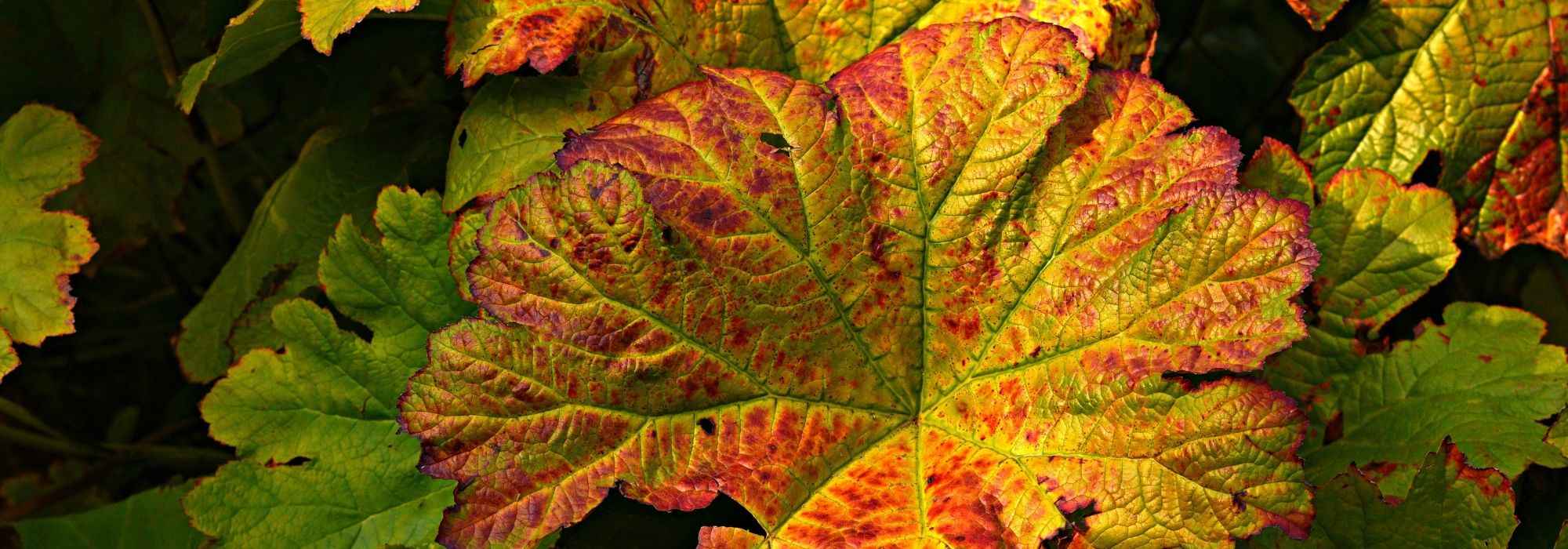
Petasites: planting, cultivation, care
Contents
Pétasite in a nutshell
- Petasite bears spectacular, giant, rounded, hat-like leaves
- Early flowering in white or pink clusters releases vanilla-scented aromas
- With excellent hardiness and easy to grow, it requires only cool conditions and consistently moist soil
- Remarkably vigorous and seldom affected by disease, it can be somewhat invasive but is easy to contain
- This large, lush perennial forms luxuriant clumps at the edges of water features and in damp, shaded areas
A word from our expert
Lush, imposing, Petasite is a vigorous ground-cover perennial that is only happy with its feet in water! You’ll love its very “jungle” vibe!
In addition to its foliage as large as hostas and an early white or pink flowering, Petasite has many qualities!
Petasites fragrans gives off a vanilla scent, while Petasites hybridus (syn. Petasites officinalis), which is edible, is commonly found in pharmacies as tablets or as a detoxified extract to combat migraines, allergic rhinitis or asthma!
This vigorous perennial forms opulent clumps (up to 1.50 m high and wide for giant Petasite!) of large round leaves, striking in summer at the edge of a pond, in a moist border, at woodland edge or in a cool bed.
Well established in a moist site, Petasite spreads rapidly, which is perfect for filling large wet areas where little else will grow, but fortunately its invasive nature can be easily contained with a spade each spring!
Vigorous and hardy, Petasite dislikes scorching sun and prefers shade, coolness and deep humus-bearing soils.
Discover this luxuriant perennial of damp banks, indispensable in a shade garden, by water’s edge, in cool to damp spots or in forgotten corners of the garden!

Large leaves of Petasites hybridus
Description and botany
Botanical data
- Latin name Petasites
- Family Asteraceae
- Common name Petasite, Hatmaker, Giant donkey's step, Devil's hat
- Flowering March to May
- Height 0.30 to 1.50 m
- Exposure Shade, partial shade
- Soil type All, moist
- Hardiness -20°C and lower
The Petasite is a perennial rhizome plant of the family Asteraceae, like the daisy and the aster. It grows naturally on riverbanks, in damp ditches and shady woods, and up to around 1,500 m altitude in Northern Europe, particularly in France, but also in Asia, North Africa and North America.
The genus includes around fifteen species, some of which such as Petasites hybridus (syn. Petasites officinalis), are so common that they are often found along ditches, near wet places or in mountainous areas they readily colonise.
Among petasites, there are small-leaved species such as Petasites fragrans, which is fragrant, large-leaved species such as Petasites albus or white petasite, and giant species such as the Japanese giant petasites (Petasites japonicus var. giganteus) and Petasites hybridus, also called Great petasite or hybrid petasite. The latter, which is also a recognised medicinal plant, has long been given many folk names such as “Hatmaker”, “Giant donkey’s step”, “Devil’s hat”, “Scabby-man’s herb”, “Plague-herb” or “marsh rhubarb”.
Petasite is also sometimes known in English as “butterbur”, because its huge leaves were once used to wrap pats of butter.
Fast-growing, all petasites form dense, spreading clumps. Depending on species, plant height varies from 0.30 m–0.50 m for groundcover forms up to 1.50 m for the huge petasite specimens. Yet even the smaller petasites can easily reach more than 1 m in spread at maturity. This perennial spreads easily, often extending well beyond intended limits thanks to its thick running rootstocks, and can become invasive if expansion is not controlled.
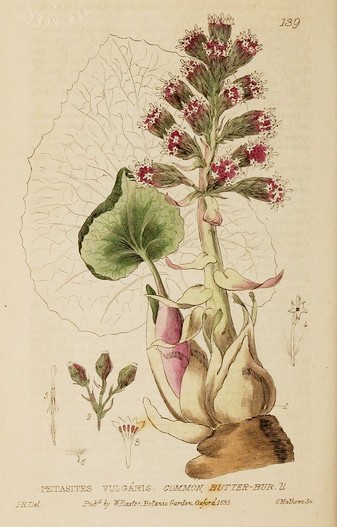
Petasite hybridus – botanical illustration
Petasite is valued mainly for its luxuriant large leaves, as its flowering is not very showy. Flowering usually appears before the foliage in late winter. From March to May, depending on climate and sometimes earlier, the upright flower stems, often purple, emerge at ground level before the new basal leaves. They open in ovoid terminal clusters composed of small heads 1–2 cm in diameter. Each head gathers numerous tubular flowers ending in five teeth and peripheral ligulate florets extended by an elongated petal. Petasite is a dioecious plant, meaning there are male and female plants that differ in the shape of these florets, which are more or less elongated. These heads are surrounded by bracts that are pale green or purplish depending on species.
These compact, globular inflorescences, borne on leafy stems, are 10–25 cm tall, sometimes truly colossal in giant petasites.
Pinkish, purplish (Petasites hybridus), white (Petasites albus) or creamy-white, they are fragrant and give off a delightful sweet vanilla scent. Rich in nectar, they attract hungry pollinating insects in the depths of winter.
Flowering is followed by the emergence of vigorous and spectacular foliage. The leaves are the main attraction of this majestic groundcover. Deciduous, the foliage dies back in winter and reappears quite late in spring, well after the flower heads. In April, from the powerful underground rootstock, rosettes of basal leaves borne on long petioles begin to emerge. The plant then produces a large clump of leaves, varying in size according to species and varieties. These spectacular leaves grow over weeks to become gigantic by early summer.
Petasite leaves are notable for their shape, from reniform (kidney-shaped) to cordate (heart-shaped), reaching 6 cm for Petasites fragrans up to 1 metre in diameter for giant species such as Petasites japonicus var. giganteus and Petasites hybridus, which are the true “hatmakers”! Indeed, Petasite takes its name from the rounded lamina of its leaves: “petasos” in Greek referred to the round hat with broad brim worn by Greek shepherds.
Leaves have more or less regularly dentate margins and a pubescent underside and sometimes a wooly upper surface with grey-green tones. Soft and downy, this foliage displays beautiful shades of green from
By late summer, the foliage of large petasites becomes so extensive that it often smothers neighbouring plants, leaving them little chance of survival.
With good hardiness down to at least -25°C, Petasite establishes itself across much of our country, except perhaps in Mediterranean climates that are too dry in summer. While it tolerates a range of soils—calcareous, neutral or acidic (except very stony ground)—it prefers rich, constantly cool or very wet woodland soil.

Development of a Petasite hybridus inflorescence
It is a shade or partial-shade, moisture-loving shade-garden plant, ideal for creating a wild look near water features or at the edge of damp woods where it can form thickets of greenery sometimes over 1 m high. It is also excellent as a border, mid- or back-of-border groundcover in semi-shaded beds, adding a lush, exotic feel.
The Petasite has had medicinal properties recognised for centuries. Extracts free of the plant’s naturally occurring toxic compounds are obtained from its leaves or rootstocks. These are used to relieve migraines and reduce symptoms of allergic rhinitis. In the 17th century it was prescribed for coughs, asthma and to treat wounds and burns.
In Japan, the long petioles of Petasites japonicus are eaten as a vegetable.
Main species and varieties
Genus comprises about fifteen species differing mainly in leaf size, ranging from 6 cm to 1 m in diameter, and in flower colour.
Most popular
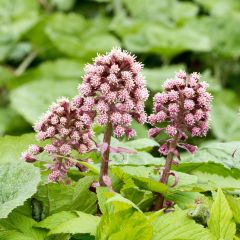
Petasites hybridus
- Flowering time April, May
- Height at maturity 50 cm
Our favourites
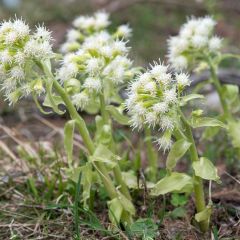
Petasites albus
- Flowering time April to June
- Height at maturity 40 cm
Discover other Petasites
View all →Available in 1 sizes
Available in 1 sizes
Available in 1 sizes
Available in 1 sizes
Available in 1 sizes
Available in 1 sizes
Planting
Where to plant petasite?
Hardy down to -25°C, petasite will establish everywhere in France, except perhaps in Mediterranean regions, too hot and dry in summer, as it prefers shaded areas and fresh, moist soils that retain water well. It will tolerate summer heat provided the soil remains always moist and cool deep down in summer, because petasite does not like drought.
It thrives in shade or partial shade, sheltered from scorching sun, under the foliage of deciduous trees which will provide the coolness it needs.
Undemanding about soil type, provided soil is fresh, moist, even waterlogged, it nevertheless prefers soil rich in organic matter, light, in which it will develop with remarkable vigour. It will also grow very well in heavy clay soil.
Before planting, remember that petasite can become invasive because once established, it will spread without caring for its neighbours… It is perfect for occupying large areas. If you want to control its development, plant it in dry soil in partial shade where sun predominates over shade; it will be much less vigorous and expansive there while still making a fine display!
It is the ideal plant for a water garden and a shade garden, for understorey or for a wet meadow. It is perfect for colonising soil of a cool understorey, the banks of a damp bank, a pond or a pool. It is useful for limiting adventive plants in the most ungrateful and very wet corners or in marshy areas of a large garden. In smaller spaces, its propensity to spread must be contained because it will encroach on the ground, ignoring boundaries.
When to plant petasite?
Planting petasite can be done either in spring, from March to May, or in autumn, from September to November.
How to plant petasite?
As you will have understood, petasite has a vigorous nature but can be invasive! Space plants well: at ripeness, a single plant will easily reach a spread of 1 m. Do not be misled by its small size on receipt of your bucket! Allow 3 plants per m² and water until established and during the first year of planting: it needs a lot of water to settle.
- Dig a hole 2 to 3 times wider than the rootball
- Fork the soil deeply
- Add a good shovelful of well-rotted compost or manure
- Backfill and firm down
- Water copiously
- Mulch the base to preserve moisture during summer
If you wish to limit the expansion of its running rootstock you can also try to contain it in a closed basket. Discover our detailed explanations in this step-by-step: limit an invasive plant.
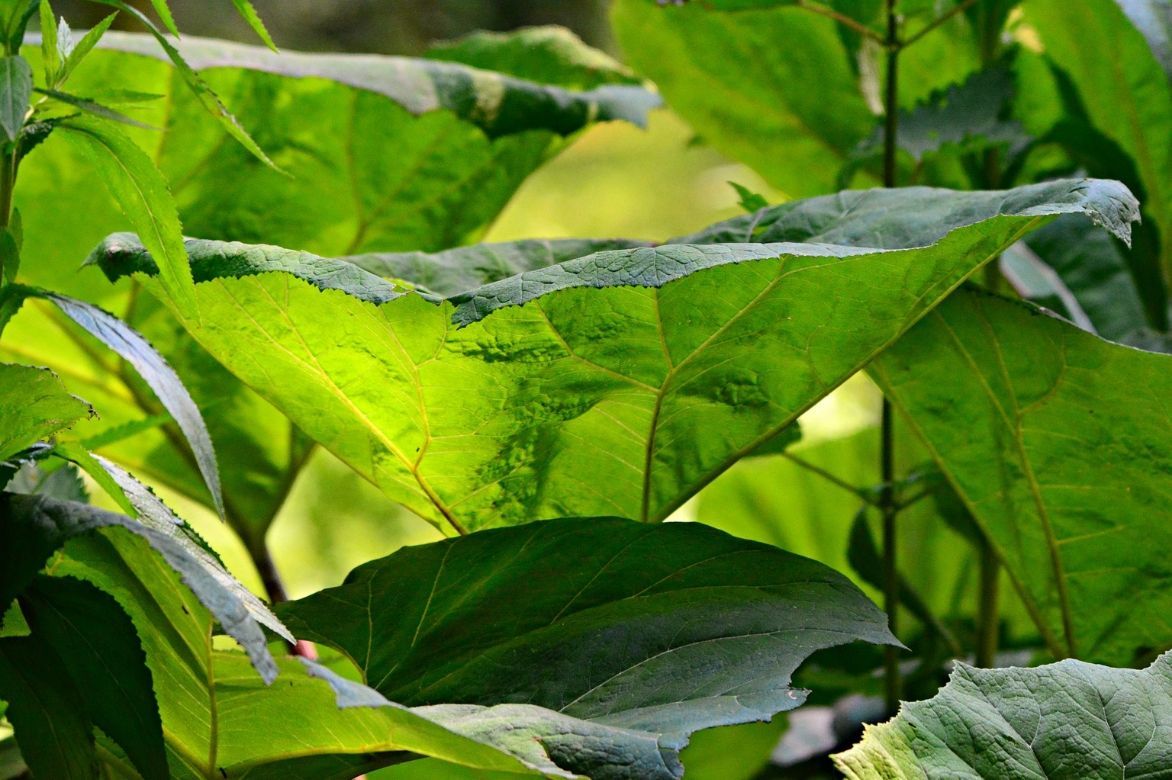
Read also
10 aquatic plants, submerged or floatingCare and maintenance
Le Petasite is not a delicate plant; it requires almost no maintenance and is free from disease.
Keep soil moist: it creates large, exotic-style displays right up to the frosts, but water often and generously as it must never lack water. Mulch in May to reduce watering and evaporation.
Petasite often exceeds gardener expectations, so to prevent it becoming invasive, each year in spring after flowering, cut around the base with a spade to remove wandering rootstocks that would otherwise spread too far.
Every two years in spring, optionally spread a few shovelfuls of compost on the stump.
Multiplication
Le butterbur has a natural propensity to spread rapidly. However, to obtain new young plants we recommend dividing in spring or autumn, after flowering, or propagating rootstocks.
Division
- With a spade, dig up part of the stump
- With a single spade stroke, take pieces of rootstock each bearing at least two leafy shoots
- Replant these pieces immediately in cool soil enriched with compost
- Water copiously to keep soil moist
Taking cuttings from butterbur
Simply cut rootstock fragments of about 10 cm bearing 1 or 2 buds and push them into moist soil so they root quickly.
Companion planting butterburs in the garden
With its oversized leaves and softly tinted flowers, Petasite is a must-have perennial in shade gardens and at the water’s edge. Whether over 1 m tall or a groundcover, it fits into any shaded setting as a large mass under trees or in a cool rockery. Although it certainly stands on its own, it lends itself to lush combinations with other perennials for moist banks or perennials for cool shade.
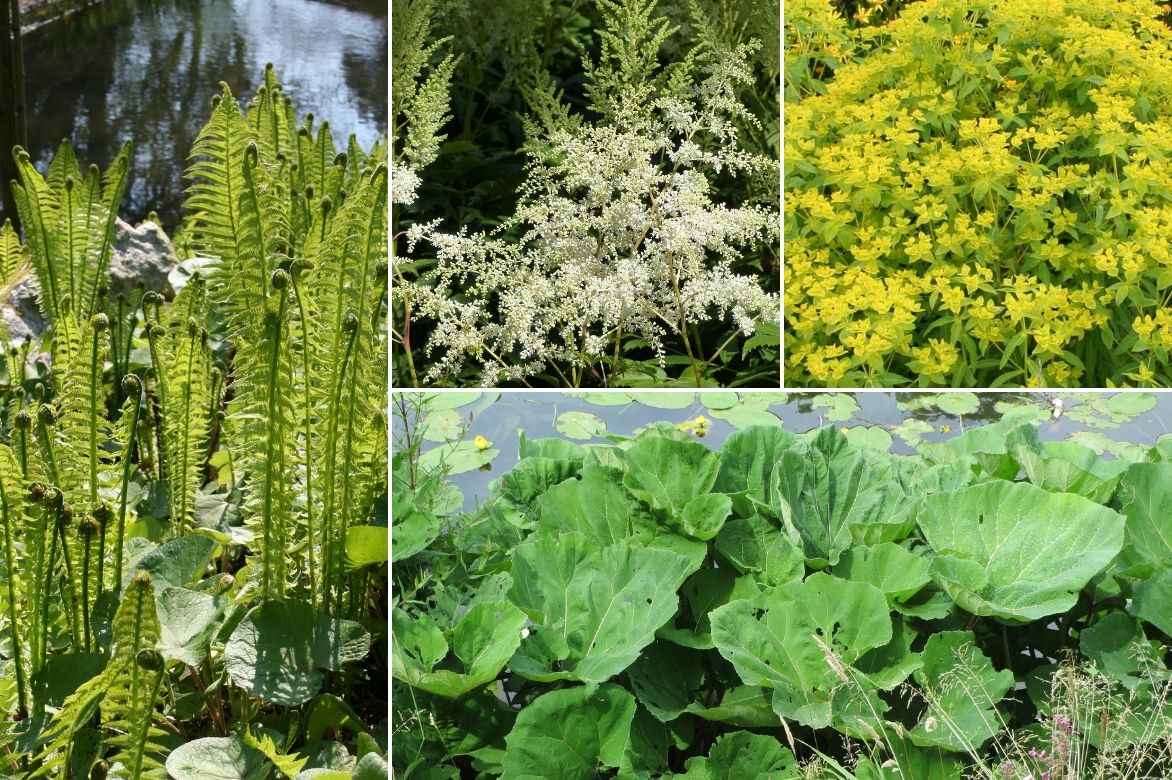
An example of a combination: Matteucia struthiopteris, Astilbe japonica ‘Deutschland’, Euphorbia palustris and Petasite hybridus
At the margin of a pond, pair it with Gunnera, Rodgersias or Darmera, goatsbeard, marsh euphorbias and graceful astilbes, meadowsweet, loosestrifes, knotweeds…
At the edge of a cool, damp woodland, in a “jungle” spirit, it will form lush vegetative masses surrounded by its shade companions such as hostas and ferns.
In a wild garden at the edge or centre of a shaded border, it will be an attractive partner for Solomon’s seals, Veronicastrum virginicum, ligularias and silver candles.
It will also look very beautiful alongside Asian primroses or hardy begonia grandis evansiana.
As its foliage reappears fairly late in spring, pair it with spring bulbs such as snowflakes, chionodoxa, crocuses, hyacinths or iris reticula, Galanthus which will occupy space in late winter before Petasites leaves attain their characteristic size!
Useful resources
- With its lush foliage, Petasite fits perfectly into an exotic, out-of-the-ordinary garden, get inspired by our ideas!
- Find shade-garden plants to accompany your Petasite
- What to plant under trees?
- Get inspiration from Michaël’s tips to create a graphic cool-shade border
- Discover our perennial plants for moist to wet soils
- Our guide: 5 perennials with XXL foliage
- Subscribe!
- Contents
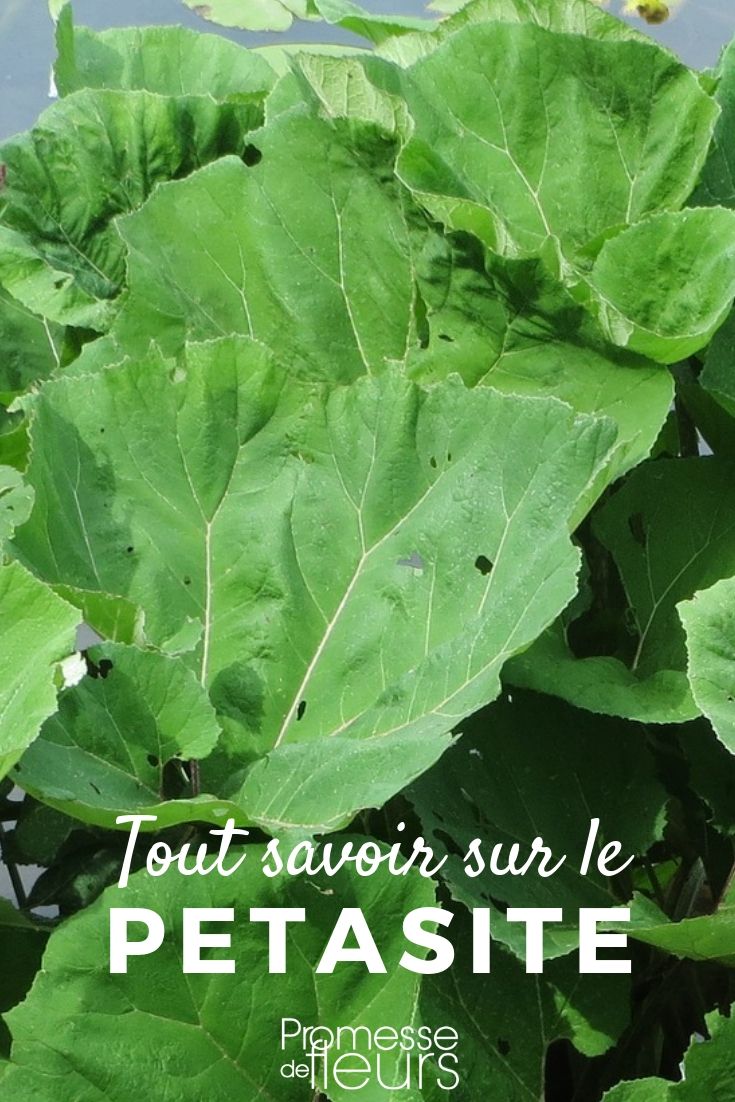































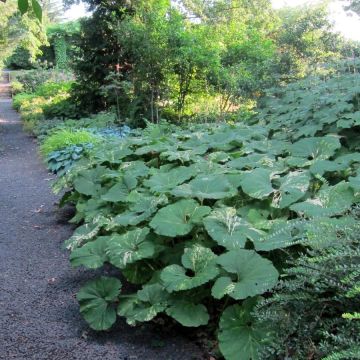


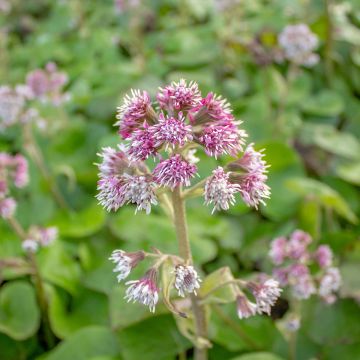
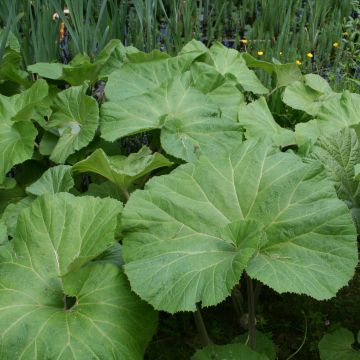
Comments